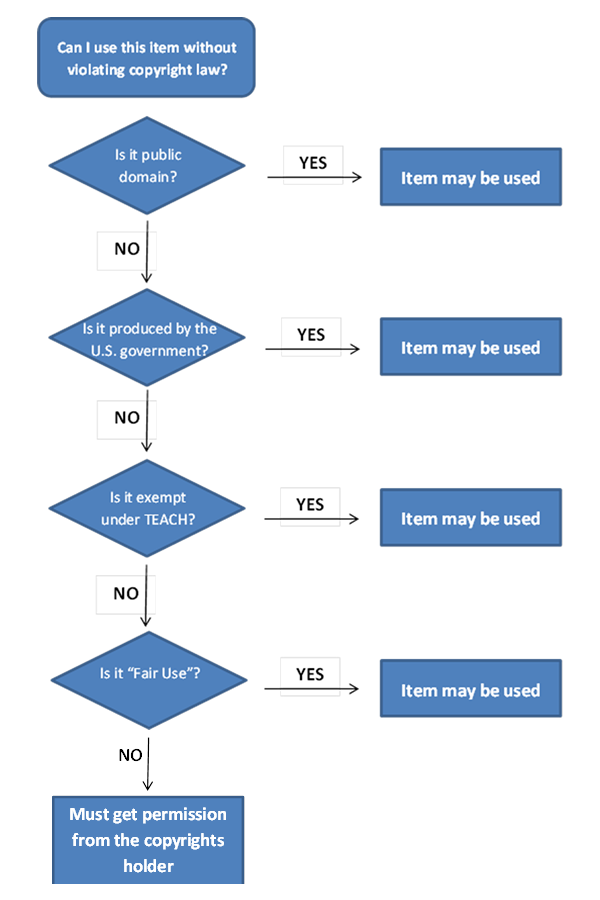
Copyright and Fair Use are important concepts for faculty and students to understand when creating and uploading content to an online course.
US Copyright law
Copyright law protects the exclusive rights of a holder to authorize others to copy, create derivative works, distribute, publicly perform, or publicly display a work. Most copyrights expire 120 years after creation. The work is considered in the public domain after that time and free to use. Works created by the federal government are not subject to copyright and are permissible. If faculty wish to use copyrighted material in an online course the use must fall under the provisions of the TEACH Act or be considered “Fair Use”. If the use does not meet one of those criteria, faculty must obtain permission (written in most instances).
TEACH Act
The TEACH Act (Section 110) of the copyright law outlines provisions for online courses. If the copyright issue does not fall under provisions of the TEACH Act it may still be allowable under “Fair Use”. In order to claim use under the TEACH Act, a number of obligations must be met. In order to perform or display works in an online class it must be:
- used under your supervision
- part of the class session
- part of instructional activities
- directly related to teaching content
Three additional requirements must be met.
- the online class must be restricted to enrolled students
- there must be reasonable effort to prevent students from being able to save or print the work
- there must be a general copyright warning in the course site
Fair Use
“Fair Use” describes the condition where limited use of copyrighted material is allowed without obtaining express permission from the rights holder. There are four factors when determining “fair use” of copyrighted items:
- the purpose of the use – used to teach or create something new OR used for commercial purposes
- the nature of the copyrighted work – fiction OR non-fiction
- the amount of the work used – small portion OR entire work
- the effect of the use on the market for the copyrighted work – labeled by the Supreme Court as “the single most important element of fair use”
Copyright Law and Fair Use Learning Module – a short presentation with a self-check quiz
This interactive module explains the basics of US copyright law and key questions that need to be asked when incorporating materials under Fair Use.
Additional Material
Association of Research Libraries – Know Your Copy Rights Site produced by the Association of Research Libraries to make faculty members aware of copyright issues and best practices.
- “Know Your Copy Rights – What You Can Do” (PDF) 16.4MB file may take a few moments to download
- Questions faculty should ask themselves about course content
University of Arkansas – Copyright and Fair Use information from the University of Arkansas Libraries Course Reserves
University of Minnesota – Thinking Through Fair Use an analysis tool that provides a checklist for “Fair Use” considerations